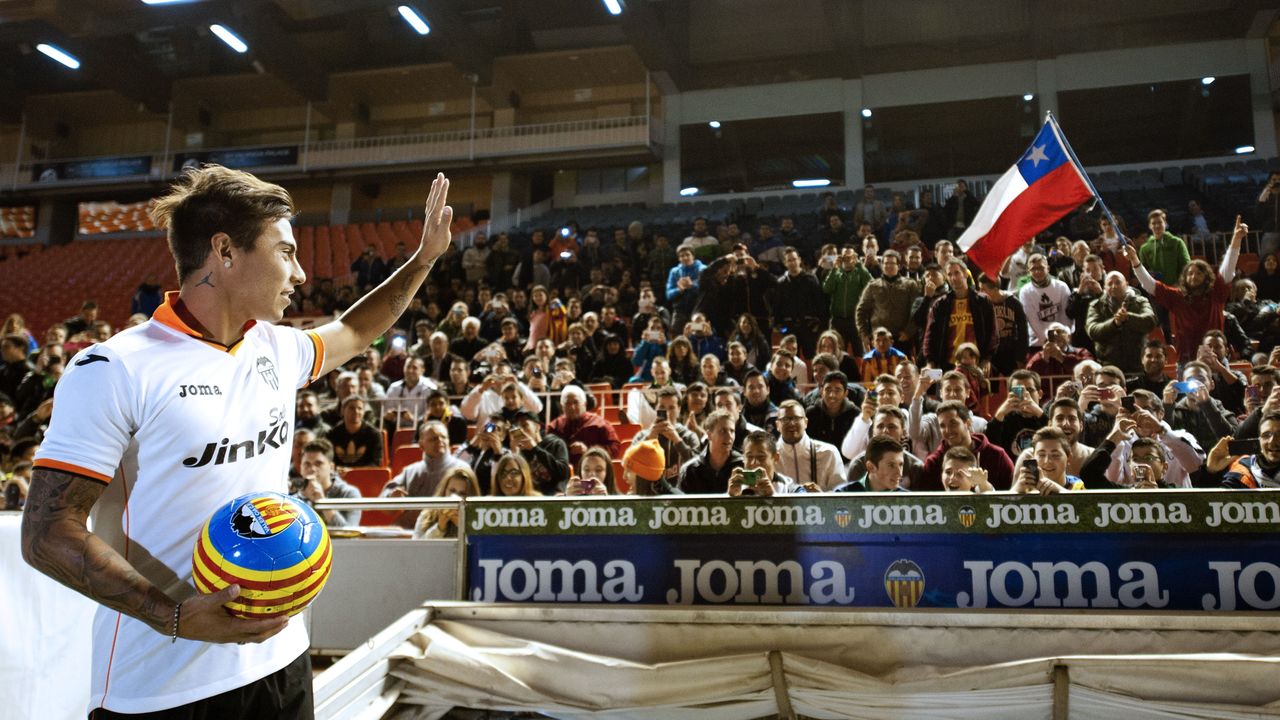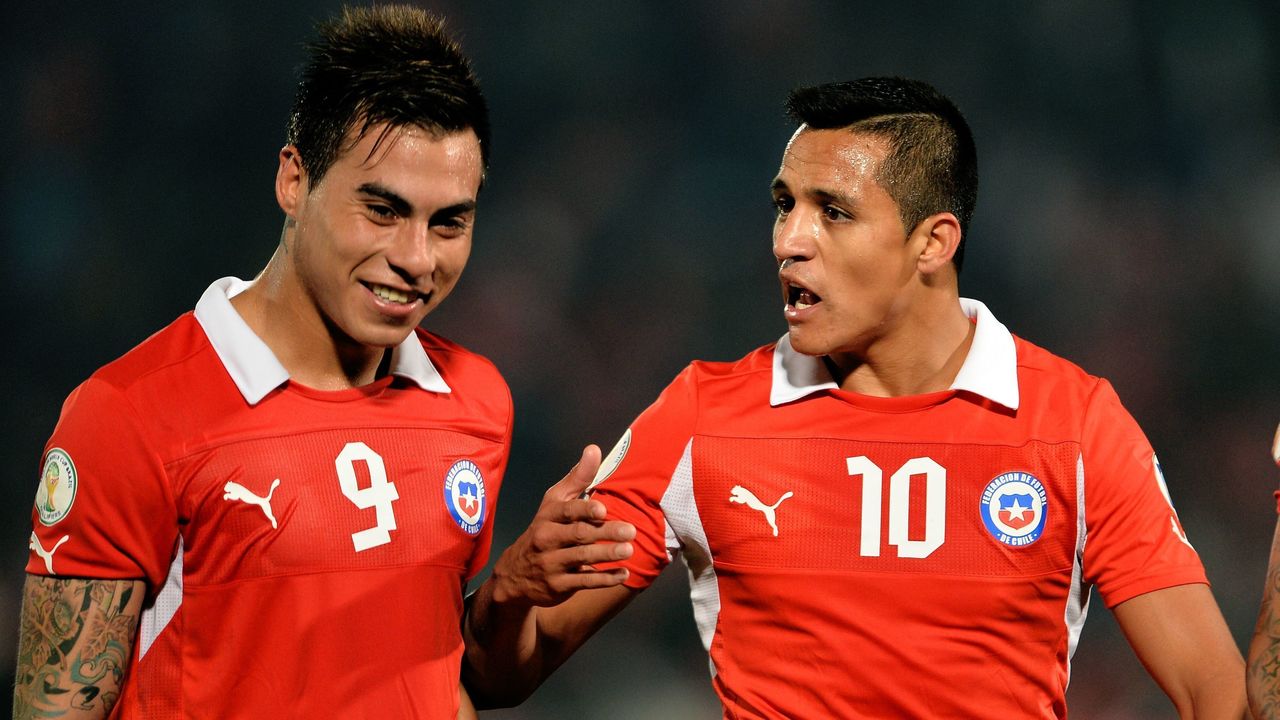Eduardo Vargas and the strange case of the tournament specialist
Eduardo Vargas is football's greatest paradox. He exists in two worlds, never at the same time, and somehow, he's made it work.
Few players perform as well for their countries as Vargas does. But if that's true, few have failed at as many clubs as he has. The fact that he's the only South American to feature in four of Europe's top five leagues isn't evidence of his versatility, but rather a failure to stick wherever he's landed. No matter the destination, he'd arrive a different player than the one who'd break records with the Chilean national team. Most of his clubs couldn't wait to get rid of him, and when they did, it came at a loss. His transfer value plummeted with each passing year.
But his play with La Roja has never wavered. Vargas has scored in four consecutive international tournaments, his latest exploits coming in the 2019 Copa America. He now has 38 goals in 84 appearances with the national team, just four behind Alexis Sanchez in the race to become Chile's all-time leading scorer.
So, what gives?
A long way

It all started with so much promise. His time - though brief - at Universidad de Chile put him in the same conversation as Neymar. Vargas finished second to the Brazilian for the 2011 South American Footballer of the Year award and earned rave reviews from respected correspondent Tim Vickery.
That was a sensational season. Vargas won the domestic league and the Copa Sudamericana - South America's version of the Europa League - while leading the tournament with 11 goals in 12 matches. Though he had fashioned himself as a more rudimentary center-forward, then-Universidad manager Jorge Sampaoli deployed Vargas on the right wing. The hustling Santiago native delivered the goals that won them the title, including one he vividly remembers off his weaker left foot.
It quickly became apparent that Vargas needed Sampaoli to realize his potential. He needed discipline. Vargas had made it that far only because a performance on reality TV opened the doors to a career in football. He didn't have the same education as his peers; to Vargas, it was all about improvising and taking on defenders. Sampaoli was as much of a tutor as he was a coach to the young forward.
"I think Sampaoli was the one who most motivated me," the 29-year-old told DW Sports. "I remember when he arrived at Universidad, he didn't summon me because I was training with no desire. Then he talked to me ... He told me that I had a lot of quality, that I couldn't lose myself like many other players lose themselves. I think that motivated me to be the Eduardo I was in 2011, the year in which we won everything."
From zero to hero

Maybe he moved on too quickly after that. Because Napoli, and by extension, the very technical Serie A, couldn't have been a worse fit. Vargas, who went there in 2012 for a reported €13.5 million, didn't have the tactical background to play in Italy, especially not under a manager as rigid as Rafa Benitez. He was shuttled out on loan to Gremio in Brazil, Valencia in Spain, and QPR in England before joining Hoffenheim in 2015 for €6 million.
He left nothing but frustrated coaches in his wake. Whether he played in a central role or out on the wing, it didn't work.
But he always found salvation with the national team. Leaving the misery of another loan spell behind him, Vargas poked home the winner against Spain in a historic 2-0 victory at the 2014 World Cup. That set into motion a run of performances that turned the Chilean into a tournament specialist. Vargas then finished as top scorer as he and his countrymen won back-to-back Copa America titles in 2015 and 2016.
The simplicity of the international game allowed Vargas to shine. National team managers have less time than their club contemporaries to establish intricate passing systems and set plays, meaning a player of Vargas' instinctive ability can have success. For that reason, traditional center-forwards Peter Crouch and Lukas Podolski - who were just as underwhelming for their clubs - often found the back of the net on the international stage.
Hitting it off

The common bond between fellow internationals can't be understated. Vargas lived the same life as many of his compatriots and came from the same traditional South American background as they had. He even began his career at the same local outfit that launched Alexis Sanchez.
"Maybe it's because I can communicate well with my Chilean teammates, or because we know each other well personally," Vargas explained.
It helps, too, to return to the same team year after year. Chile has remained largely unchanged since the 2014 World Cup, allowing the players to form relationships and work off of muscle memory. He and Sanchez have complemented each other particularly well, combining their work ethic to form an extremely fluid front pairing.
And for the longest time, Sampaoli was there waiting for Vargas to return. He was his best self around the manager, who taught him everything he needed to know. Something as simple as positioning was foreign to Vargas before he met his mentor. It seemed he was "incapable of reaching his maximum for anyone other than Sampaoli," Jonathan Wilson wrote in Issue 18 of The Blizzard.
All of these things combined to create a true anomaly of the game. Were it not for his chameleonic changes at the international level, Vargas would've led an entirely forgettable career, but he managed to carve out a niche for himself. He's just five goals shy of matching the all-time Copa America scoring record, and with a chance to narrow the margin Friday against Ecuador, there's no reason to bet against him.